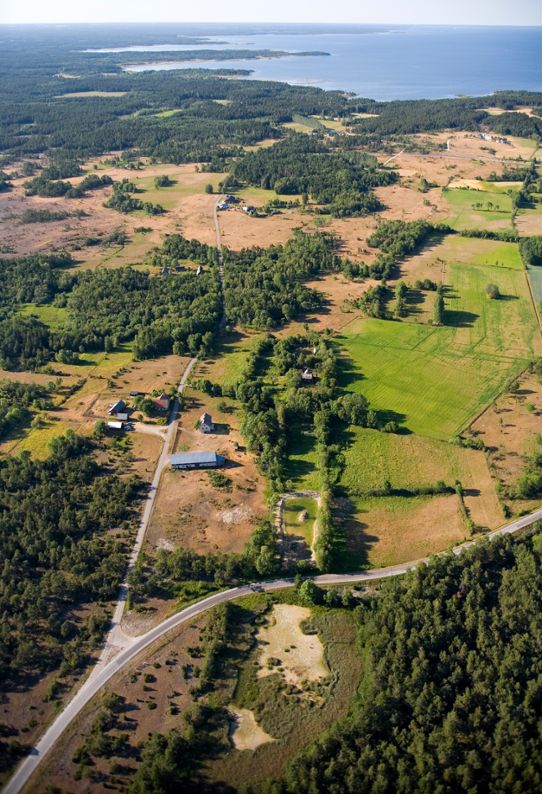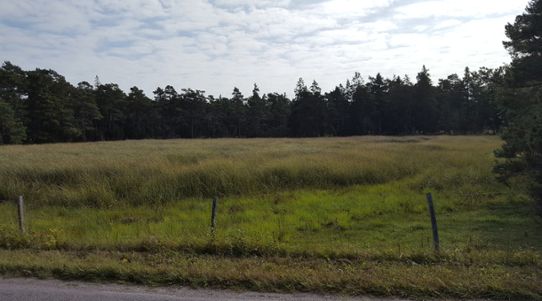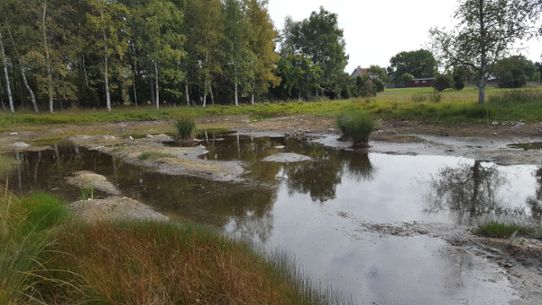The water supply in summertime has long been a problem for those who live in Gammelgarn Parish on Gotland. When their own wells dry up, they have been forced to collect water from Katthammarsvik. This is a situation that is both laborious and time-consuming, especially for those landowners who require water for their animals.

Depleting water supply
There are around 13 000 properties on Gotland that are dependent on private wells for their water supply. The majority of these are drilled into the rock, but many are dependent on water from earthen wells dug into thin layers of earth.

The period of water shortages suffered by the landowners in Gammelgarn became increasingly long with each summer. At the beginning of the 1990s, there was a problem with the water supply for approximately one month each summer. The length of this period gradually increased to almost six months.
In Katthammarsvik, water is taken from the Gutenvik spring, which also began to show signs of a diminishing water supply. During the summer, municipal water was therefore transported using tanker trucks to Katthammarsvik.
Water study group
Six landowners started a water study group in order to understand what was required to improve the situation and decide on action. The also formed a cooperative society and applied for funding.
Gotland has many areas with wetlands on which drainage ditches have been built in order to create agricultural land. There has also been a natural process in which wetlands have become overgrown so that they now often do not have any open water surface. It is common for the reed-like plant great fen-sedge to establish itself and this forms large continuous clumps in damp, open wetlands. Great fen-sedge has traditionally been used as a thatching material for roofs.
Cutting the sedge was tried out as a way to recreate open water surfaces, but the following year this appeared to have had no effect. More radical measures are required.
Capturing water
This project has used the natural water system in the landscape as its starting point. The landowners’ interventions consisted of recreating and digging out the existing wetlands and connecting them with ditches. There are now eight small ponds connected to the outflow into Ängmansviken. The wetlands have been dug out to a depth of approx. one metre and clay has been used to seal the sides along the outflow. Some heightening of the edges of the ponds has also been undertaken. In this way, water has been collected and its outflow into the Baltic Sea has been delayed. As the water level in the wetlands is kept up, the water levels in the wells do not sink as quickly as they did before.

More water and greater solidarity between neighbours
The project has led to a significantly smaller problem with the water supply and to greater solidarity between the neighbours. Land issues often lead to discussions about boundaries and the conditions of ownership. However, the water systems in the area are joined together and therefore require everyone to help out. It becomes a matter of our water – not your water and my water.
In autumn 2016, the residents in the area establish that they have had water throughout the dry season at the same time as there have been water shortages all around Gotland.
Challenges
As wetlands and ditches easily become overgrown, a great deal of maintenance is required. However, it is difficult to finance the measures required. The existing forms of support generally involve measures to reduce the nutrient load from intensively cultivated agricultural land to lakes and watercourses. There is currently no direct funding to support increasing the supply of water to private wells.
Another challenge that remains is to improve the water quality. A problem that is shared with c. 40% of the private water sources on Gotland, according to Region Gotland’s surveys. During the summer, when no groundwater formation is taking place, the water quality can deteriorate periodically. In terms of the area in question, the levels of humus and bacteria sometimes increase.
Financing
The 2 250 m2 wetland “Madammen” was built in 2005 with rural development support, at a cost of SEK 63 000. Two other wetlands were restored in 2006 by the respective landowners using their own money. The rest of the created wetlands, the system of ditches and the restoration of existing wetlands was financed via a Leader project, at a cost of SEK 1 million.
More examples of climate adaptation
This is one of many examples of climate adaptation. There are more in the collection of ideas being built up by the Swedish National Knowledge Centre for Climate Change Adaptation at the Swedish Meteorological and Hydrological Institute (SMHI). The collection of examples has the aim of sharing experiences and providing ideas to everyone who works with climate adaptation. Examples describe concrete measures and challenges in several subject areas. They show how different actors have worked to adapt their activities to the climate changes that are already being noticed today and those that we cannot prevent in the future.